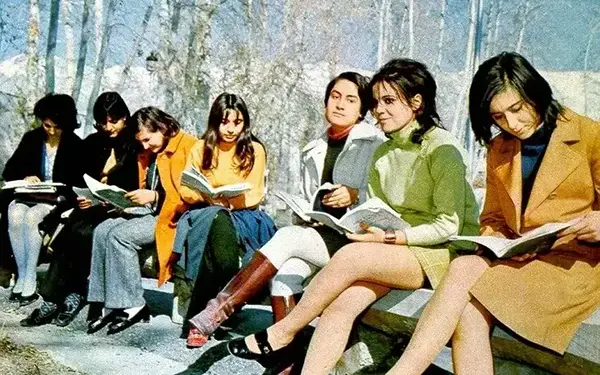How the United States and its allies sacrificed the Iranian democratic path and facilitates the emergence of an Islamic order permanently exploited for their interests.
Long before the black turbans of Khomeini, Iran tried to become a sovereign parliamentary democracy. In the 1950s, under the leadership of Mohammad Mossadegh, the country sketched an unprecedented path in the Middle East: a secular, democratic state, based on popular sovereignty and national resources control. But this attempt was crushed by a coup orchestrated by the CIA and the British secret services. Worse still: according to many historians, the West has let emerge – if not favored – the Islamic regime of 1979, hoping that it serves its geostrategic interests better.
More than 40 years later, while Iranian youth rise up against Islamic orderthat Israeli-American strikes have targeted Iran, this past resurfaces as a scar never closed.
Mossadegh: The sacrificed democracy
Democratically elected in 1951, Mohammad Mossadeghmoderate nationalist, embodies an unprecedented promise: to return power to the people and regain control of Iranian oil monopolized by the Anglo-Iranian Oil Company (future BP). Supported massively by the population, it nationalizes black gold. London retaliated by an embargo, then convinces Washington – in the middle of the Cold War – which must be overthrown Mossadegh to avoid a “communist” drift.
August 1953: the operation Ajaxled by the CIA and the Mi6causes the fall of the government. Shah Mohammad Reza Pahlavi, hitherto set back, is reinstalled with Western support. The first democratic experience of the Muslim world is thus broken – not by its internal enemies, but by the self -proclaimed guards of Western liberal democracy.
Shah dictatorship: Western-compatible authoritarianism
From 1953 to 1979, the Shah reigned with an iron fist, supported by the United States, which provided it with weapons, intelligence services (the claim Savak) and an authoritarian modernization model. Iran becomes a strategic bulwark against Soviet communism and a reliable energy partner for the West.
But the repression, the corruption, the contempt for freedoms and the arrogance of the regime dig a abyss between the modernist elite and the people. In the shadows, a man is organized: Ruhollah Khomeiniexiled, radical Shiite, structuring an Islamic opposition around the mosque, martyrs and the rejection of imperialism.
1979: the American paradox
Contrary to popular belief, the United States has not tried to save their protégé to the end. In 1978–1979, the administration Housing even maintains discreet communication channels with Khomeini and his loved ones. For what ? Because the alternative – a popular left uprising or a total collapse – seems worse to them. Khomeini then reassures his desire to maintain stability and petroleum agreements.
Power changes hands. The Islamic regime sets up. And Washington-Surprised by post-revolutionary radicalization-finds himself a prisoner of his strategy of “lesser evil”.
A useful Islamic republic for unstable balances
During the 1980s, the United States did not face the new regime head. They even indirectly support Saddam Hussein’s Iraq in the war against Iran (1980-88), without wishing a clear victory. Objective : weaken the two regional powersmaintain an unstable balance, and continue to play a role of arbitrator and supplier of weapons in the Gulf.
Some sources indicate that Sensitive information on secular and communist opponents have been transmitted to the new Islamist masters to facilitate their elimination.
The revolt of 2022: the disputed heritage of the Islamic Republic
THE September 16, 2022the death of Mahsa Aminia young Kurd arrested for a “poorly worn” veil causes an unprecedented uprising. Women, students, ethnic minoritiesall claim the end of the Islamic Republic. Slogans overthrow official rhetoric: ” Woman, life, freedom “Replaces” Death to America “.
This severely repressed revolt reveals moral and political bankruptcy From the Khomeini regime, which has become a brutal, patriarchal power, and ideologically out of breath.
2024–2025: the return of Western fire
Since 2024, Regional tensions have changed in direct military confrontation : Israeli attacks on Iranian nuclear infrastructure, targeted American strikescyber attacks, assassinations of officers from the guardians’ body.
But these interventions, in the name of security or anti -terrorist fight, revive ancient resentments: those of a people Caught between an imposed regime and persistent foreign guardianship.
A betrayed people twice
The trajectory of modern Iran is marked by a double sabotage: that of a national democracy emerging by the Western powers, then that of a popular revolution confiscated by a theocracy.
By sacrificing Mossadegh, then accommodating the Khomeini regime, The West has helped to enclose Iran in a historical trap. This trap still serves strategic interests today: maintaining tension in the Gulf, justifying the military bases, weighing on the energy markets.
In 2025, history does not only weigh on memory: it continues to shape alliances, hatreds, and upcoming uprisings.
To deepen :: Video of the intervention of political science professor at the Austin Community College Dr Roy Casgranda








